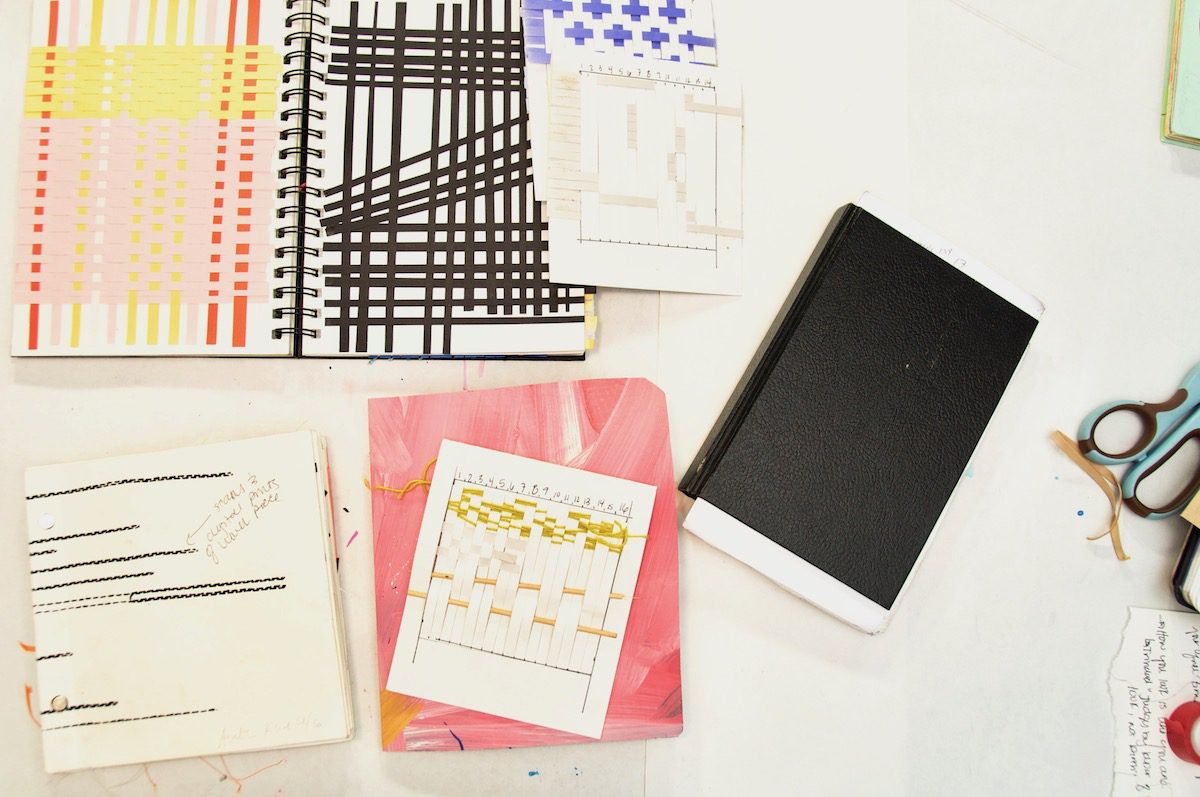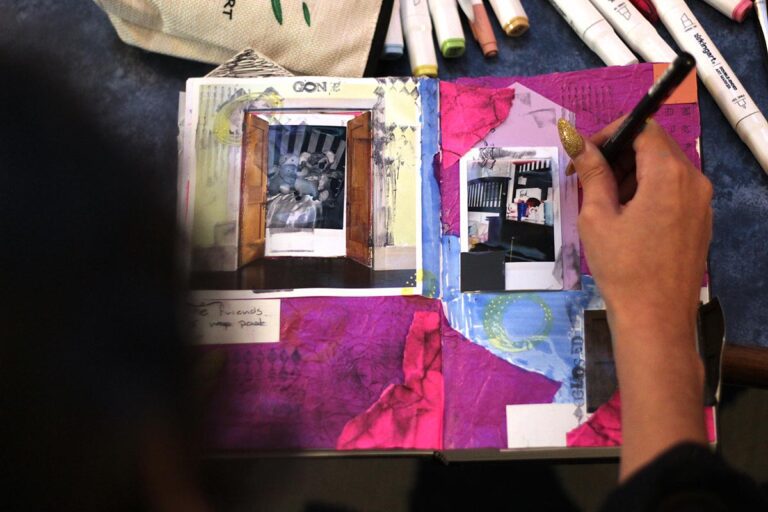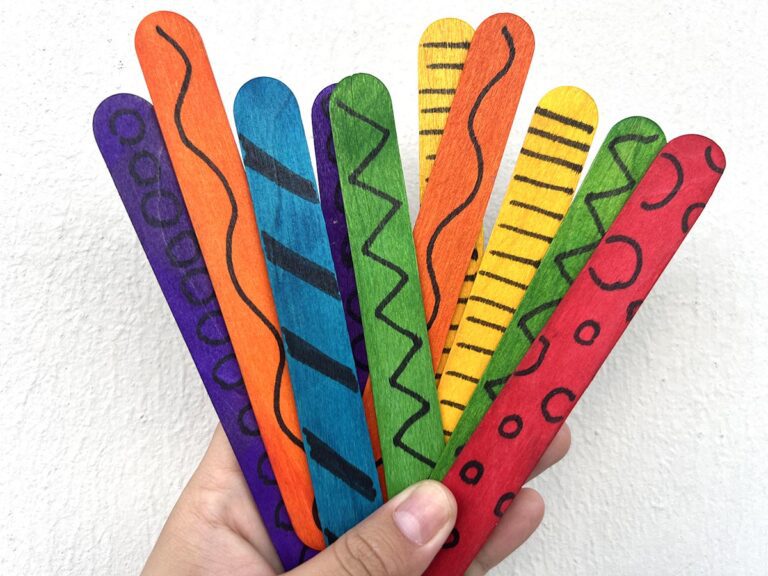Note: Be sure to review all resources and preview all artists before determining if they are appropriate to share with your students.
Many of us have students work in sketchbooks. Students might be completing prompts or points for daily assignments. But, how many of us have students actually using their sketchbooks as a powerful tool spilling over with ideas?
Designer, Pep Carrio, has this to say about how he works in his sketchbook:
For me, a sketchbook is like a kind of portable laboratory, a space to mark with references, to capture the immediate, to experiment; a memory warehouse to which I can return whenever I am searching for an idea or when I simply want to remember an instant, a time in the past.
When students move from begrudgingly completing a sketchbook assignment each week to working as Carrio does, the results can be profound.
It’s time to help students learn to use their sketchbooks as an endless tool for exploring and recording ideas.
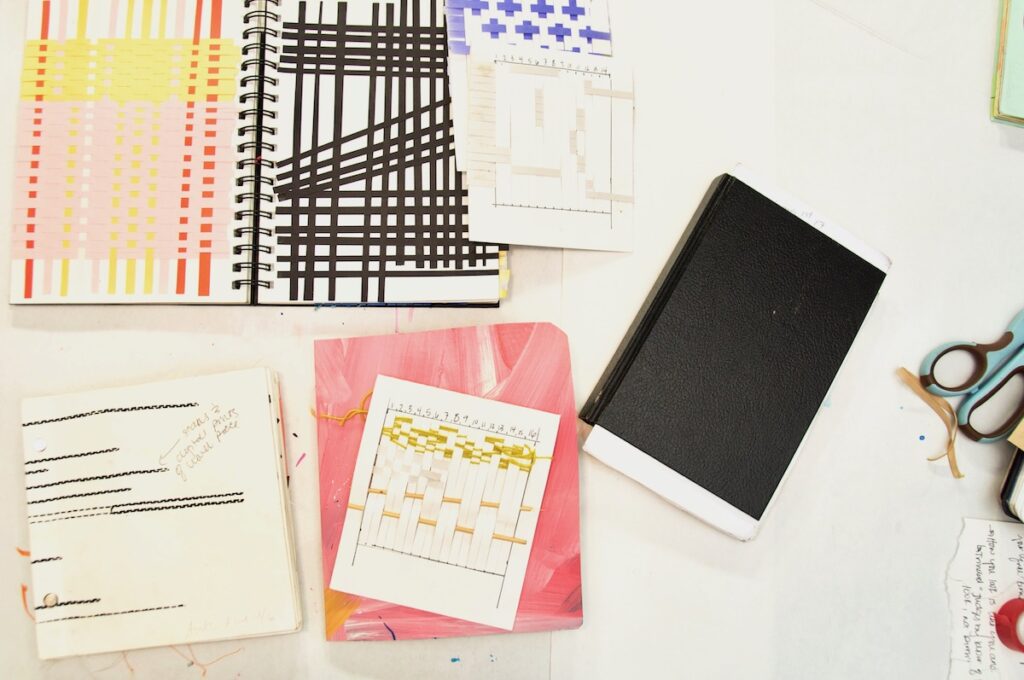
To get started, you’ll want students to collect their sketchbooks.
If they only have one, that’s fine, but the more, the better. Remind students to think about doodles or sketches in other notebooks. For example, they may have great ideas scribbled in the margins of their algebra notes.
Next, you’ll want a supply of sticky notes in at least two different colors. If sticky notes are not in your budget, you could use strips of colored paper as bookmarks or have students dog-ear some pages.
Once all supplies are collected, explain to your students they’re going to spend time looking through their sketchbooks.
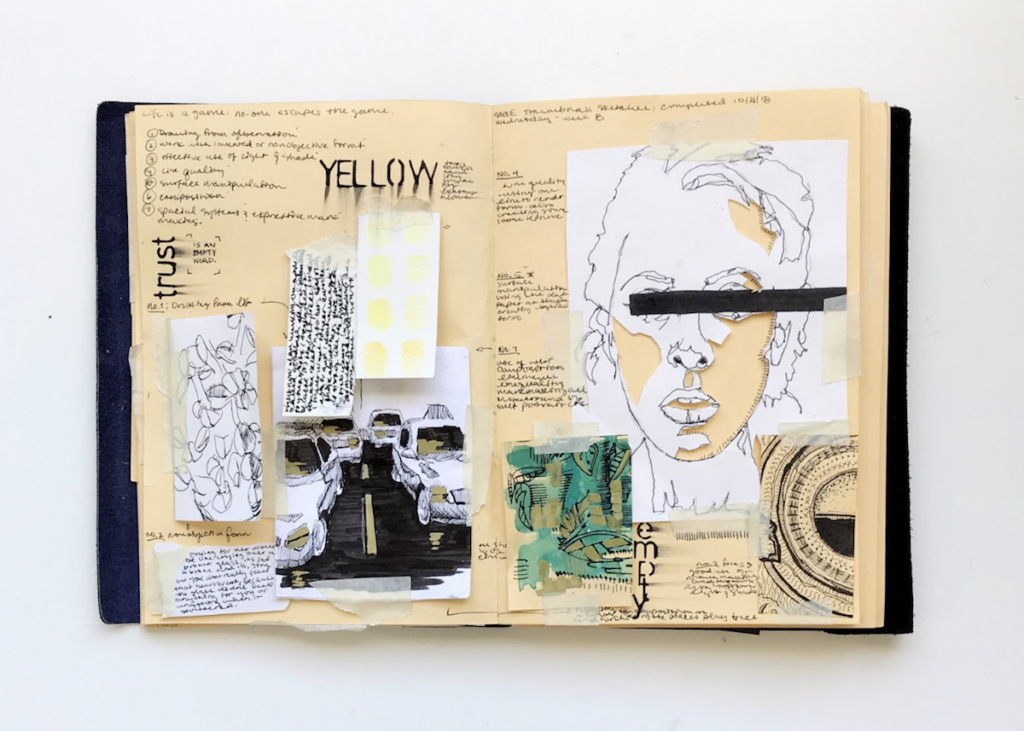
As they browse, have them reflect on what’s on each page. Use one color sticky note or bookmark to mark the pages with ideas that still interest them, but not yet explored in their work. With the other color, have students mark the page they love because they’re visually appealing.
If you’re having students dog-ear the pages, you might have them do the top corner for pages with ideas to explore and the bottom corner for pages they love.
Once students finish looking through their sketchbooks, discuss how to organize their ideas.
Start by showing students examples. Explore how artists use their sketchbooks by reading the article, The R&D Lab of Creativity: Inside the Sketchbooks of Beloved Illustrators and Designers.
As students work to organize their ideas, remember, there is no right way to do this. Have students reflect on what interests them the most.
Here are 3 ways to organize sketchbook ideas.
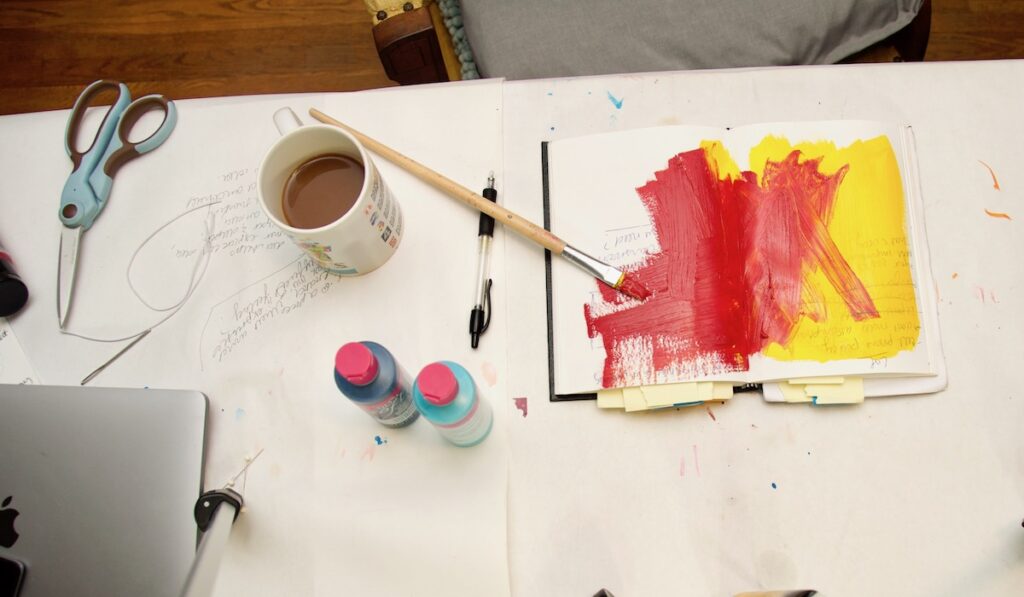
1. Build a new book.
Students who are open to the idea of tearing pages out of their sketchbook should tear out marked pages. They might select to organize those pages in order of interest. As students build a new book, consider having them insert a blank page next to each old idea, giving them space to further develop and explore new ideas. The easiest way to do this is to have students hole punch their pages, and organize them with binder rings.
2. Edit their current sketchbook.
Students may choose to leave the marked pages in their sketchbook, instead, ripping out the others.
Getting rid of old unwanted ideas, or pages students no longer like can feel liberating. The process of getting rid of pages also helps to remind students their sketchbook isn’t precious. It’s a place to explore and make mistakes.
Again, once students have removed unwanted pages, they may wish to add in some blank pages for further exploration. Do so by stapling in some blank pages or use sticky notes to add new ideas on top of the old.
3. Leave the book intact.
You may have some students who don’t like the idea of tearing pages from their sketchbook at all, and that’s okay. Encourage these students to leave their book intact. Remind them to continue to go back and review the pages they’ve marked. When they’re feeling stuck, refer them to their marked pages.
Depending on the time you have with your students, you may choose to skip the reorganization step and dive right into creating. Remember, the goal of this process to have students begin to think of their sketchbooks as a resource.
Here are 3 ways to encourage your students to continue making in response to their sketchbook.
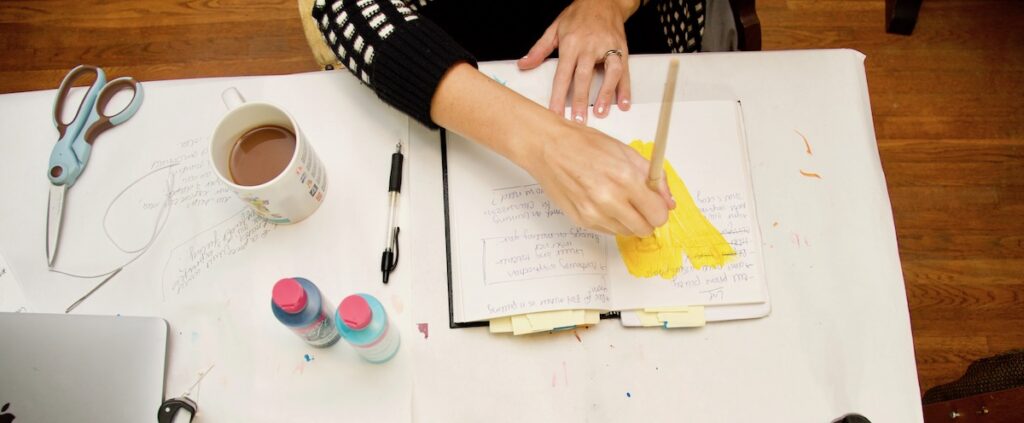
1. Create a Collage
It’s likely that your students have interesting elements throughout their sketchbooks. Using collage techniques allows students to take the parts they like, combine them, and create new and interesting spreads.
If your students are exploring collage, you’ll want to make sure to have glue sticks as well as tape available. While colored and washi tape is fun, it’s not essential. Scotch tape and masking tape will also do the trick.
Turn this into a project by teaching students about how to lay out images and text on a spread for a book or magazine.
2. Make a New Piece
Have students select one of their old ideas and think about how they can turn it into a new piece. Ask students to reflect on what stopped them from taking the idea further in the past. Are there resources or supports they need to help them move forward?
3. Recycle Pages
Recycle pages students no longer like. This process is not only fun, but it can also be a way to save money. It also helps students think about reworking old pieces instead of just throwing them out.
Encourage students to paint or draw over pages they don’t like. Or, cut and fold old pages, transforming them into something new.
Sketchbooks are a powerful tool for problem-solving, idea generation, and experimentation. While we often have students use sketchbooks, we can push them further when sketchbooks become a reference tool. They should be a resource students revisit when they’re feeling stuck or uninspired.
Sketchbooks are also a great place for students to learn about the art of failing and starting over. Tearing out pages, collaging over old ideas, or covering pages with paint helps students get into the practice of starting over. For even more ideas, check out the Sketchbook Ideas that Really Work PRO Pack. Look for this Pack and many more in PRO Learning. Connect today to learn more about how to get PRO Learning in your school or district.
What is one new idea you were introduced to today that you want to try in your classroom?
What is your favorite way to use sketchbooks in your art room?
Magazine articles and podcasts are opinions of professional education contributors and do not necessarily represent the position of the Art of Education University (AOEU) or its academic offerings. Contributors use terms in the way they are most often talked about in the scope of their educational experiences.
